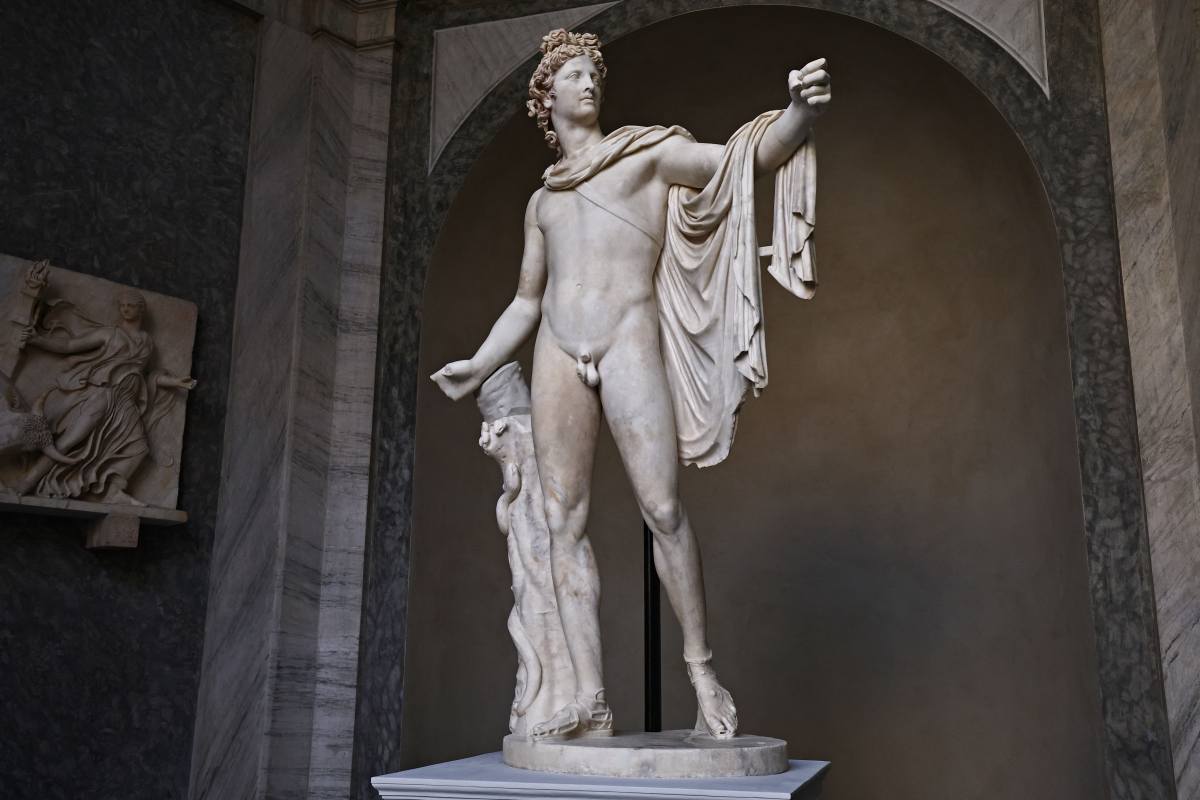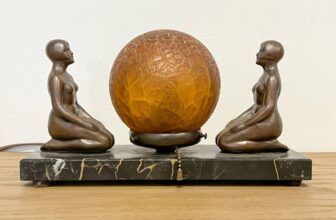
The Meaning of the Apollo Belvedere Sculpture
The Apollo Belvedere is one of the most celebrated sculptures of classical antiquity and a defining symbol of beauty, divinity, and human perfection. Attributed to the ancient Greek sculptor Leochares, this marble statue represents the Greek god Apollo, known as the deity of the sun, music, poetry, prophecy, and healing. Though the original bronze is lost to history, the Roman marble copy that we know today was rediscovered during the Italian Renaissance and has since become a cornerstone of Western art appreciation.
In this comprehensive story post, we’ll explore the artistic, historical, and symbolic meanings of the Apollo Belvedere, dive deep into what it represents in both ancient and modern contexts, and consider its place not only in museums but also as a potential centerpiece for modern-day garden decoration.
The Origin and History of Apollo Belvedere
The Apollo Belvedere is widely believed to be a Roman copy dating back to the 2nd century AD of a lost bronze original, crafted around 330–320 BCE by the famed Greek sculptor Leochares. Known for his work on the Mausoleum at Halicarnassus, one of the Seven Wonders of the Ancient World, Leochares was a master of form, proportion, and idealized beauty.
The statue was rediscovered in the late 15th century in central Italy, possibly near the ancient ruins of Antium (modern-day Anzio), and was acquired by Pope Julius II. It was placed in the Vatican’s Belvedere Courtyard, a section of the Vatican Museums designed by Donato Bramante. It quickly gained acclaim as a model of idealized classical form and was praised by artists and scholars of the Renaissance and Enlightenment alike.
By the 18th century, it had become the benchmark of masculine beauty in Western art. Thinkers such as Johann Joachim Winckelmann, the father of modern art history, hailed it as the “highest ideal of art among all the works of antiquity that have survived.”
What Does the Apollo Belvedere Sculpture Represent?
At its core, the Apollo Belvedere represents Apollo, one of the most revered gods in both Greek and Roman mythology. The sculpture captures him in a moment of dynamic repose, poised, serene, and radiant with divine authority. His hair is tied back in an elegant knot, his gaze is noble and distant, and his outstretched arm suggests he has just released an arrow from his bow. While the bow itself is now missing, scholars agree that the pose implies a completed action, possibly the slaying of the monstrous Python or a symbolic act of divine judgment.
The figure is almost nude, draped only with a flowing cloak (chlamys) that slips down from his shoulders, showcasing the idealized male form. This presentation was not just aesthetic, it was deeply symbolic. In classical Greece, nudity was not a sign of vulnerability but of heroism, divine beauty, and moral virtue. The exposed body of Apollo is not sensual for its own sake but an emblem of harmony, proportion, and divine power.
This sculpture does not merely depict Apollo as a mythological figure. It embodies the very essence of the classical worldview, where man and god are intertwined through ideal form and reasoned beauty.
What Does Apollo Belvedere Symbolize in Art?
In the history of art, few sculptures have had the lasting influence of the Apollo Belvedere. For centuries, it was regarded as the epitome of artistic perfection and was studied and copied relentlessly by Renaissance and Neoclassical artists. But beyond its aesthetic value, the sculpture is laden with deep symbolism.
Divine Reason and Enlightenment: Apollo was not just a sun god but a symbol of light, reason, and clarity. During the Age of Enlightenment, these attributes made the Apollo Belvedere a beacon for thinkers and artists who sought to harmonize nature, reason, and the human spirit.
Artistic Idealism: The sculpture became the model of how the human form should be rendered in sculpture, balanced, symmetrical, and perfectly proportioned. It shaped generations of academic art, from Renaissance workshops to 19th-century academies.
Heroic Masculinity: The figure represents not brute strength but poised, intellectual strength. His serene expression, controlled movement, and elegant physique convey a masculinity that is noble and wise, not aggressive.
Cultural Rebirth: For Renaissance humanists, the sculpture embodied the revival of classical learning and aesthetics. To them, Apollo was a god of civilization and the arts, and his image was a symbol of the rebirth of knowledge after the so-called Dark Ages.
Thus, in the world of art, the Apollo Belvedere became more than just a sculpture, it became a metaphor for civilized humanity itself.
The Meaning of the Apollo Belvedere Sculpture
What makes the Apollo Belvedere so enduring is not just its physical form, but its rich conceptual layers. It is an artwork that invites contemplation on several levels:
Aesthetic: Its perfect proportions and lifelike pose encapsulate the Greek ideal of kalokagathia, a philosophical concept that equates physical beauty with moral virtue.
Philosophical: Apollo, as the god of reason, stands in contrast to Dionysus, the god of chaos and passion. Thus, the sculpture can be read as an emblem of rational thought and control over base instincts.
Spiritual: The upward gaze and distant expression of the statue suggest a being who sees beyond the earthly realm, a nod to Apollo’s role as a seer and oracle.
Cultural: In the context of the Renaissance and Enlightenment, it became a symbol of humanism, where the divine and the human are not at odds, but mirror images.
Ultimately, the Apollo Belvedere is a celebration of human potential. It reflects a vision of humanity that is aspirational, reaching toward the divine not through mysticism, but through art, intellect, and beauty.
Is the Apollo Belvedere Suitable for Garden Decoration?
Though originally created as a sacred or artistic object, the Apollo Belvedere has found new life in modern settings, including as a garden sculpture. But is it suitable?
The answer is an emphatic yes, provided it’s done with intention and respect for its classical heritage.
Timeless Elegance: The serene pose and flowing lines of the statue lend themselves beautifully to garden settings. Whether in a formal European-style garden or a more relaxed landscape, the Apollo Belvedere adds a touch of refinement and cultural depth.
Symbolism of Harmony with Nature: Apollo is associated with music, healing, and the natural world. Placing his statue in a garden can evoke a sense of peace, order, and beauty, harmonizing art with the natural environment.
Architectural Balance: The vertical grace of the statue can serve as a focal point, drawing the eye and balancing horizontal garden layouts. It pairs well with classical columns, fountains, and trimmed hedges.
Cultural Sophistication: For lovers of history, mythology, or classical art, incorporating an Apollo Belvedere replica into your garden is a way to express those passions. It makes a statement of aesthetic appreciation and timeless taste.
Material Consideration: Modern replicas are often made of weather-resistant materials like cast stone, resin, or marble composites, making them ideal for outdoor display without sacrificing visual authenticity.
While the sculpture has deep historical and philosophical significance, in a garden, it becomes more than a symbol, it becomes an experience, inviting quiet reflection and connecting past and present in a shared space of beauty.
Apollo Belvedere: A Living Legacy
What gives the Apollo Belvedere its enduring power is not just its technical perfection or the acclaim it has garnered over centuries. It is the way it continues to inspire, challenge, and captivate audiences, whether displayed in the Vatican Museums or among flowering shrubs in a modern garden.
Its story is one of transformation, of a lost bronze that re-emerged in marble, of a pagan god revered anew in Christian Europe, of a mythological figure that became a universal symbol of aesthetic and philosophical ideals.
Whether you see it as a divine icon, a masterwork of sculpture, or a meaningful garden centerpiece, the Apollo Belvedere stands as a testament to humanity’s enduring quest for beauty, order, and understanding.
The Apollo Belvedere is not just a statue, it is a narrative carved in stone. It speaks of gods and men, of ideals and aspirations. It tells a story that spans continents and millennia, weaving together threads of mythology, philosophy, and art into one harmonious form.
To own a replica is not merely to possess a sculpture, but to participate in a cultural tradition that celebrates the very best of what humanity has dreamed and created. Whether in the hallowed halls of a museum or beneath the open sky of a garden, Apollo continues to radiate his golden light, serene, eternal, and infinitely inspiring.




